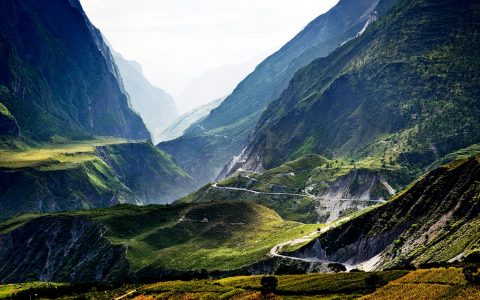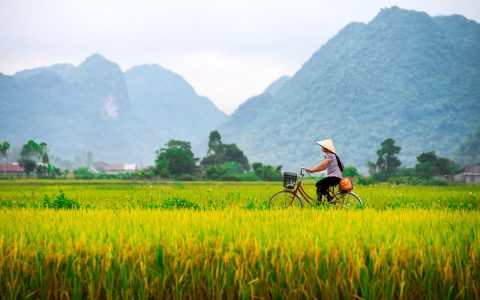Varanasi: The Spiritual Heart of India
 The religious and cultural heartbeat of India can be found in Varanasi, the most sacred city for Hindus, and the oldest living city in the world, dating back to 2,000 BCE. Also known as Benares, Banaras or Kashi, Varanasi is the holiest of the seven sacred cities in Hinduism. Devout Hindus believe that if you die here, you will be forever liberated from the endless cycle of death and rebirth (reincarnation). However, if you did not have the luck to die in Varanasi, your ashes can be immersed in the Ganges for salvation.
The religious and cultural heartbeat of India can be found in Varanasi, the most sacred city for Hindus, and the oldest living city in the world, dating back to 2,000 BCE. Also known as Benares, Banaras or Kashi, Varanasi is the holiest of the seven sacred cities in Hinduism. Devout Hindus believe that if you die here, you will be forever liberated from the endless cycle of death and rebirth (reincarnation). However, if you did not have the luck to die in Varanasi, your ashes can be immersed in the Ganges for salvation.
I’ve heard many people say that Varanasi is the best place to end your journey; but in my opinion, Varanasi is the ideal place to begin your travels in India. It’s only here where you’ll begin to understand many other things about the country itself, like its caste system, Hindu beliefs, birth status, customs, and so much more. Here are some of the key things to see and do in this deeply spiritual city.
The Ganges River
 “The Ganga is the river of India, beloved of her people, round which are intertwined her racial memories, her hopes and fears, her songs of triumph, her victories and her defeats. She has been a symbol of India’s age-long culture and civilization, ever-changing, ever-flowing, and yet ever the same Ganga.”
“The Ganga is the river of India, beloved of her people, round which are intertwined her racial memories, her hopes and fears, her songs of triumph, her victories and her defeats. She has been a symbol of India’s age-long culture and civilization, ever-changing, ever-flowing, and yet ever the same Ganga.”
-Jawaharlal Nehru
It’s hard to put into words the all-encompassing significance of the Ganges, or Ganga, to Indians. The revered ‘mother river’ of India originates in the Himalayas, snakes through northeast India, and empties in neighbouring Bangladesh. Considered a living goddess and featuring in many Hindu creation stories, the Ganges is sacred all along its 2,525-kilometre (1,569-mile) route. It’s said that bathing in its waters (especially on auspicious days) will destroy ten lifetimes of sins. Her eternal waters nourish, feed and give life to millions of Indians in this cradle of civilization.
Vishwanath Temple
The most famous temple in town, the golden gleam of Vishwanath is dedicated to Lord Shiva, one of the supreme deities of Hinduism; it was first built in 1776. If you visit the temple, you won’t be allowed to take bags, cameras, phones, or electronic devices in; it may be best to simply leave them at your hotel (or deposit them in lockers on-site). It’s said that bathing in the Ganges and visiting this temple will absolve you of your sins.

The Ghats of Varanasi
Especially in Varanasi, you will see the unblemished, everlasting pageantry of the cycle of life and death on full display. The city’s famed ghats, a series of stepped embankments built along the banks of the Ganges River, are awash with activity, ancient rituals and practices, to the everyday mundane. You’ll see people bathing, washing laundry, engaging in commerce, paying respect to loved ones through ritual cremation, and much more. Some of the ghats are designated for cremations and puja (ritual devotionals), and others for bathing. There are 88 ghats in the city; these are just a few of the most notable.

Manikarnika Ghat
Mentioned as early as the 5thC in records, Manikarnika Ghat is the main burning ghat, where bodies are cremated to receive moksha (liberation). It’s also the source of two Hindu creation legends. Hindus believe that this is the ideal place to be cremated; dead bodies are handled and cremated in grand funeral pyres by doms, outcasts, who are also tasked with keeping the eternal flames of the ghats burning. Many doms have become quite wealthy as they preside over cremation ceremonies and other rituals.

Dashashwamedh Ghat
The most colourful and impressive ghat of all, you’ll find nightly rituals performed by priests here at at 7 p.m., on every single day of the year. The agni puja is a fire offering and worship to Lord Shiva, the Ganges River, the sun, the nature of fire, and the universe itself. Its name derives from the Hindi legend that ten horses were sacrificed here by Lord Brahma, and that it was created to welcome Lord Shiva himself. It is also the closest ghat to Vishwanath Temple.

Indulge in India
Discover the land of kings and camels, soaring mountains and once-in-a-lifetime-experiences on your own customized adventure to India.
Start PlanningGet Lost
Simply walking around this indescribable city and its ages-old, mazelike streets, is something that must be experienced. No matter where you are, most streets lead to the ghats along the Ganges—no map necessary.

Silk Shopping
 A centre of silk in the country, experiencing the ritual of silk shopping in Varanasi is a great way to immerse yourself in the culture. It’s a whole ritual here: there’s a bit of colour, flair and flamboyance as merchants display their wares for you. Sit down for a tea, have a chat, and shop away!
A centre of silk in the country, experiencing the ritual of silk shopping in Varanasi is a great way to immerse yourself in the culture. It’s a whole ritual here: there’s a bit of colour, flair and flamboyance as merchants display their wares for you. Sit down for a tea, have a chat, and shop away!
Sarnath
The religious atmosphere pervading Varanasi can also be found in nearby Sarnath (also known as Isipatana), about 13 kilometres (8 miles) to the northeast, where Gautama Buddha founded Buddhism in 528 BCE when he gave his first sermon here. You’ll see still-standing stupas, and an 80-foot statue of the Buddha. This popular pilgrimage site for Buddhists also features additional Buddhist temples supported by various nations: China, Japan, Thailand, Sri Lanka, and more, which are worth a look.

Make a move
 Another popular activity to do in India is taking a traditional yoga class. What better place to practise than in the country of its origin? One of B&R’s good friends, Smrti, who comes from a family of yoga instructors, often leads classes in town. There’s nothing like working your way through a series of sun salutes (maybe even as the sun rises) in the city.
Another popular activity to do in India is taking a traditional yoga class. What better place to practise than in the country of its origin? One of B&R’s good friends, Smrti, who comes from a family of yoga instructors, often leads classes in town. There’s nothing like working your way through a series of sun salutes (maybe even as the sun rises) in the city.
MORE FROM Asia-Pacific + India

Biking in Cambodia with B&R Expert Guide Fin
Cambodia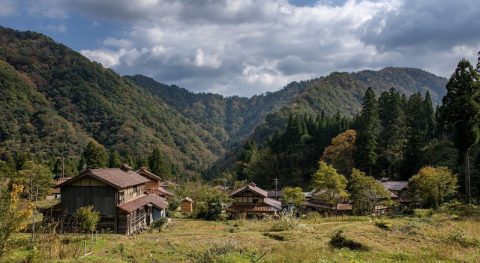
The Slow Fund: Rice Production with Ozuchi Village
Japan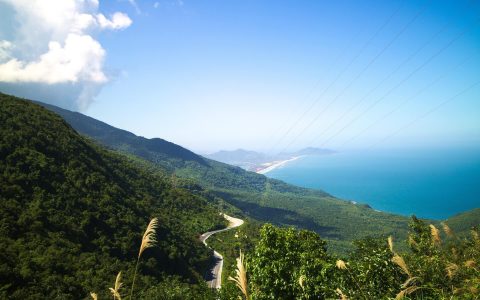
Take a Virtual Ride on the Hai Van Pass in Vietnam
Vietnam
How Three Cambodian Hotels Are Joining Forces to Feed Their Communities
Cambodia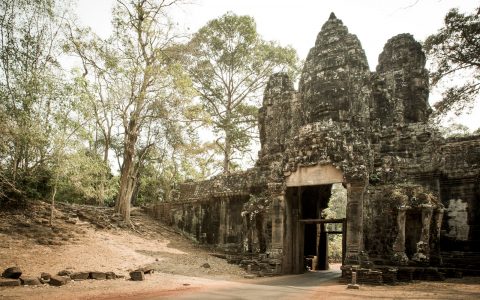
Meet Fin—B&R’s Expert Guide in Cambodia
Cambodia
An Insider’s Eye on Vietnam: What to See and What to Skip, According to our Vietnam Expert
Vietnam
Photo Essay: Exulting in Mongolia’s Eternal Blue Sky
Mongolia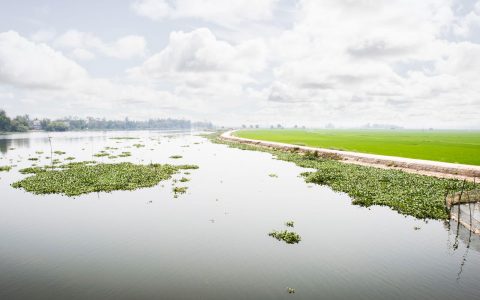
The Best Times of Year to Travel to Asia
Vietnam
Chris Litt: On Mongolia and the Desire to Disconnect
Mongolia
Top 6 Multi-Day Walks in Australia
Australia
The 8 Best Restaurants in Auckland
New Zealand
The 5 Best Restaurants in Wellington
New Zealand
8 Reasons Why You Need to Take an Australian Adventure
Australia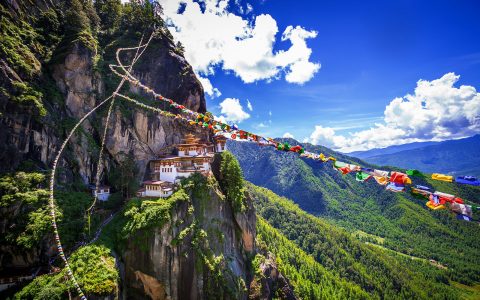
Cultural Quirks About Bhutan That Will Blow Your Mind
Bhutan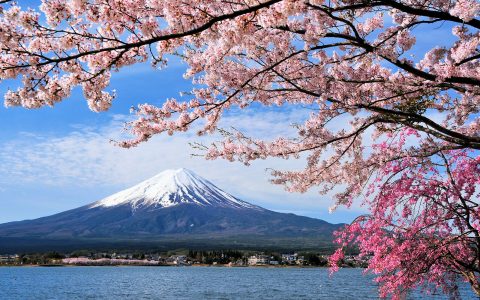
5 Things to Know Before You Go to Japan
Japan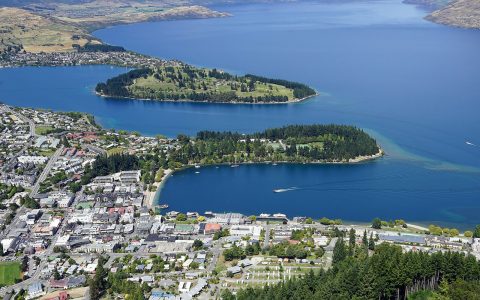
8 Favourite Restaurants to Eat in Queenstown
New Zealand
10 Must-Try Australian Wines
Australia
Where to Eat in Hong Kong: 7 Best Restaurants
China
A Kiwi’s Guide to Enjoying New Zealand
New Zealand